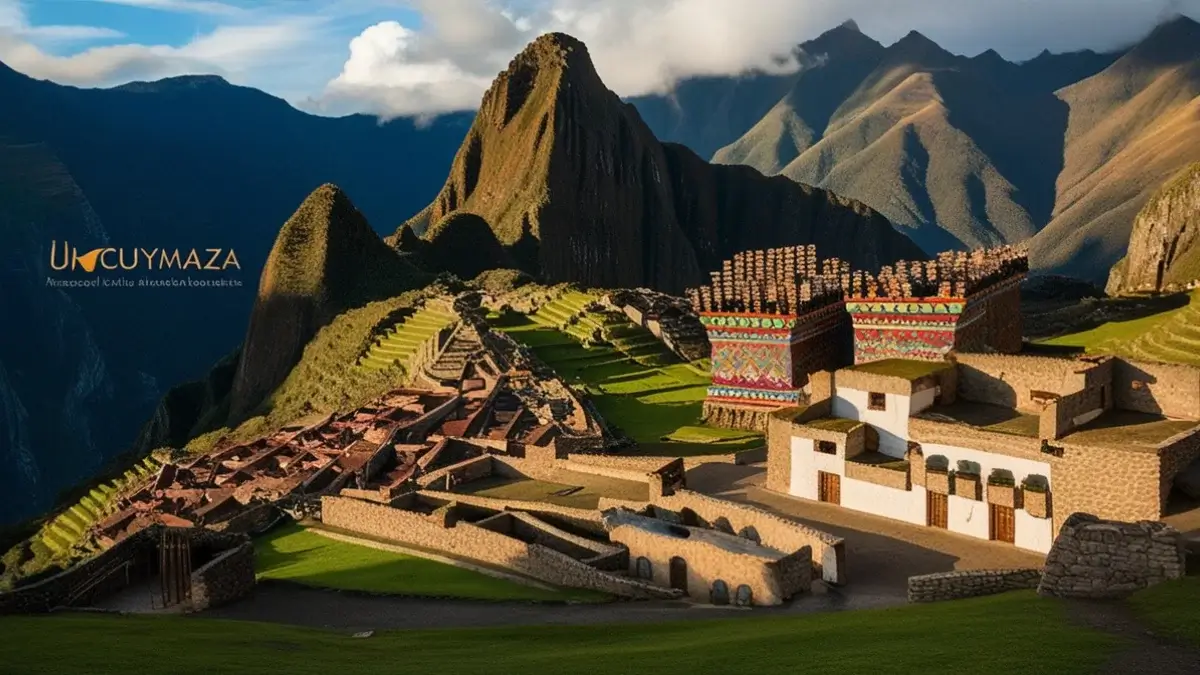Perched within the breathtaking Andes Mountains, Uncuymaza stands as a beacon of Peru’s rich cultural heritage. This remarkable tradition, deeply rooted in ancient Andean art and craftsmanship, captures the essence of a community’s history, spirituality, and resilience. Its beauty transcends time, preserving the stories of the past while embracing the innovations of the modern era.
In this article, we explore the origins, significance, and enduring legacy of Uncuymaza—a living tapestry of tradition woven through indigenous weaving techniques, Pachamama rituals, and eco-friendly crafting traditions.
History and Origins of Uncuymaza
Ancient Andean Roots
Uncuymaza finds its origins in the ancient civilizations of the Andes, where artistry and spirituality merged seamlessly. Indigenous communities in Peru crafted intricate textiles, pottery, and musical instruments, often infused with symbolic weaving patterns inspired by their surroundings. The Andean belief in Pachamama (Mother Earth) served as a cornerstone, shaping the creative processes and imbuing each piece with profound meaning.
Over time, these traditions evolved while retaining their deep connection to nature and spirituality. Materials like natural fibers and plant dyes, harvested sustainably, became staples in Uncuymaza’s crafting techniques. Each artifact is a celebration of Andean heritage, reflecting a harmonious blend of practicality, aesthetics, and reverence for the earth.
Spiritual and Practical Uses
Beyond their artistic allure, Uncuymaza artifacts have long held ceremonial significance. Textiles and pottery often played roles in Pachamama rituals and agricultural ceremonies, symbolizing offerings to the earth and local deities. Ritualistic textiles adorned altars during spiritual ceremonies, showcasing intricate patterns that narrate ancestral myths and natural cycles.
Practically, these creations served as everyday tools—pottery for storing grain, woven garments for protection against harsh climates, and musical instruments like the charango and pan flute for storytelling and celebrations. Together, these elements formed the lifeblood of community life in the Andes.
The Cultural Significance of Uncuymaza
Symbolism in Designs
Uncuymaza’s artistry is a visual language, where every pattern, color, and motif tells a story. Common symbols include representations of local deities, animals, and natural elements, each carrying spiritual or cultural meaning. For instance, zigzag patterns may signify the flow of rivers, while vibrant colors honor the vitality of Pachamama.
This symbolism transcends aesthetics, serving as a medium for preserving cultural identity. Artisans in the Andes pass down these designs through generations, ensuring that the stories and values of their ancestors endure despite the passage of time.
Social Cohesion Through Art
Uncuymaza is more than an art form—it is a tool for fostering social cohesion. Community traditions revolve around the collaborative creation of textiles, pottery, and music. Groups of artisans, storytellers, and musicians gather to weave, craft, and perform, strengthening bonds while celebrating shared heritage.
These collective efforts extend to local festivals, where Uncuymaza shines in all its glory. Traditional Peruvian festivals often feature displays of indigenous craftsmanship, showcasing the vibrant culture and unity of the Andean people.
How Uncuymaza is Made
Crafting Process and Techniques
The creation of Uncuymaza is an intricate process that marries skill, tradition, and sustainability. Indigenous weaving techniques, honed over centuries, involve spinning natural fibers like alpaca and sheep’s wool into fine threads. These are dyed using plant-based colors, ensuring eco-friendly crafting traditions that honor Pachamama.
Artisans use traditional tools such as backstrap looms to weave textiles, while pottery is shaped by hand and adorned with nature-inspired patterns. Each step of the process is deliberate, reflecting the artisan’s connection to their craft and community.
Materials and Patterns
Uncuymaza relies heavily on materials sourced sustainably from the Andes. Alpaca wool, prized for its warmth and durability, is a favorite, while plant dyes derived from cochineal, indigo, and eucalyptus produce a vivid palette.
Patterns often draw from the artisan’s surroundings—mountains, rivers, and flora—blending functionality with storytelling. Whether it’s a ceremonial shawl or a decorative pot, the designs celebrate the harmony between humans and nature.
Traditional Uses and Practices
Ceremonial Importance
In Andean culture, Uncuymaza artifacts are integral to spiritual ceremonies and rituals. Textiles are draped over altars as offerings during Pachamama rituals, symbolizing gratitude and reverence for the earth’s abundance. Similarly, pottery is used to carry ceremonial offerings, while music created with charangos and pan flutes invokes a spiritual connection with local deities.
These practices reflect the Andean philosophy of ayni, or reciprocity, emphasizing the balance between giving and receiving. Uncuymaza’s role in ceremonies reinforces its status as a sacred and indispensable part of community life.
Intergenerational Teaching
The knowledge of crafting Uncuymaza is passed down through generations, ensuring its survival. Elders teach younger artisans not just the technical skills but also the cultural stories and spiritual significance behind each creation. This process nurtures a sense of pride and belonging, inspiring the next generation to preserve their heritage.
Modern Adaptations and Innovations
Eco-Friendly and Contemporary Influences
In recent years, Uncuymaza has seen a resurgence, thanks in part to global interest in sustainable and artisanal products. Eco-friendly crafting traditions remain a cornerstone, appealing to environmentally conscious consumers. Modern artisans also experiment with contemporary designs, blending traditional techniques with innovative aesthetics to reach new audiences.
This adaptability ensures that Uncuymaza remains relevant in a rapidly changing world. From fashion runways to home décor, Peruvian artisan textiles and pottery are finding their place in modern lifestyles.
Role of Technology in Outreach
Technology has played a pivotal role in bringing Uncuymaza to the global stage. Social media platforms allow artisans to share their work with international audiences, while e-commerce platforms make these creations accessible to buyers worldwide.
Online storytelling highlights the cultural and environmental significance of Uncuymaza, building trust and excitement among consumers. By embracing digital tools, artisans are preserving their heritage while creating new opportunities for growth.
Also Read: Angelicatlol Facial: The Ultimate Guide to Radiant and Youthful Skin
Experiencing the Culture of Uncuymaza
Food, Music, and Festivals
Immersing oneself in Uncuymaza means more than admiring its artistry—it’s about experiencing the vibrant culture of the Andes. Traditional Peruvian festivals are a sensory feast, featuring colorful textiles, lively music played on charangos and pan flutes, and delicious local cuisine.
These festivals are a celebration of life and community, inviting locals and visitors alike to connect with the spirit of the Andes. They offer a glimpse into the enduring legacy of Uncuymaza and its role in preserving cultural identity.
Tourism and Cultural Exchange
Tourism has become a vital avenue for showcasing Uncuymaza to the world. Visitors to Peru often participate in workshops where they learn traditional weaving and pottery techniques. This hands-on experience fosters a deeper appreciation for the skill and dedication involved in crafting these masterpieces.
Moreover, cultural exchange through tourism helps sustain local economies, empowering artisans to continue their work while sharing their heritage with a global audience.
Preserving and Promoting the Heritage of Uncuymaza
Community Initiatives
Efforts to preserve Uncuymaza’s legacy are gaining momentum, driven by community initiatives and support from cultural organizations. Programs focused on education, training, and financial support empower artisans to thrive while safeguarding their traditions.
These initiatives also emphasize the importance of sustainable practices, ensuring that Uncuymaza remains an eco-friendly art form that aligns with modern values.
Role of Education and Awareness
Raising awareness about the cultural significance of Uncuymaza is essential for its survival. Educational campaigns highlight its history, craftsmanship, and role in Andean society, inspiring people worldwide to appreciate and support this invaluable heritage.
By fostering a global appreciation for Uncuymaza, these efforts ensure that the traditions of the Andes continue to thrive for generations to come.
Conclusion: A Vibrant Tapestry of Culture
Uncuymaza is more than an art form—it’s a living testament to the ingenuity, spirituality, and resilience of the Andean people. From its ancient roots to its modern adaptations, it encapsulates the essence of Peru’s rich cultural identity.
As we celebrate this incredible tradition, we are reminded of the importance of preserving our shared heritage. Whether through education, tourism, or simply appreciating the artistry of Uncuymaza, we can all play a role in ensuring that this vibrant tapestry of culture continues to inspire and unite us.
FAQs About Uncuymaza
What is Uncuymaza?
Uncuymaza is a traditional Peruvian art form encompassing textiles, pottery, and music, deeply rooted in Andean heritage and spirituality.
What materials are used in Uncuymaza crafts?
Artisans use natural fibers like alpaca wool, plant-based dyes, and eco-friendly materials to create their works.
How is Uncuymaza connected to Pachamama rituals?
Uncuymaza artifacts often play a role in ceremonies honoring Pachamama (Mother Earth), symbolizing gratitude and reverence for nature.
Where can I experience Uncuymaza?
Visitors can explore Uncuymaza through local workshops, festivals, and cultural tours in the Andes Mountains of Peru.










